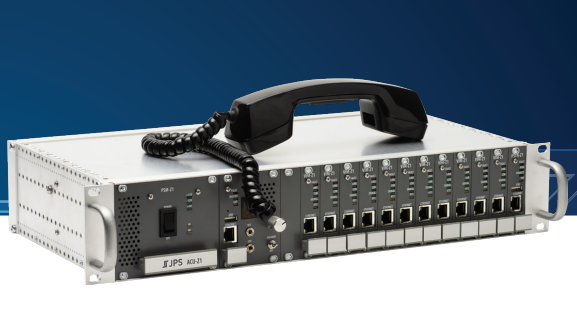communications intelligence
electronics intelligence
electronics warfare
military
military communications
military grade
military radio
radio direction finding
radio frequency
signals intelligence
tactical communications
analysis, comint, communicationsintelligence, cryptography, cryptology, cybersecurity, dataanalysis, df, directionfinding, electromagnetic spectrum, electronicwarfare, espionage, EW, informationsecurity, informationwarfare, intelligence, interception, militaryintelligence, monitoring, nationalsecurity, radiocommunications, RadioWaves, SIGINT, signalsintelligence, strategicintelligence, surveillance, tacticalintelligence, threatintelligence
9M2PJU
0 Comments
Whispers in the Ether: Unraveling the Secrets of Communications Intelligence (COMINT)
In the intricate dance of modern warfare and geopolitical strategy, information reigns supreme. The ability to anticipate an adversary’s moves, to understand their intentions before they materialize, is the ultimate advantage. Within the realm of intelligence gathering, Communications Intelligence (COMINT) stands as a silent sentinel, a critical tool for deciphering the hidden language of enemy communications.
The Silent Art of Eavesdropping:
COMINT is more than just listening in; it’s a sophisticated process of intercepting, analyzing, and interpreting foreign communications to extract valuable intelligence. Unlike active measures that disrupt or interfere with enemy signals, COMINT operates passively, observing and recording the electromagnetic whispers that reveal crucial insights. This passive nature is key, allowing for continuous monitoring without alerting the target.
The Anatomy of COMINT:
The COMINT process is a meticulously orchestrated sequence of activities:
- Search and Intercept: The Hunt for Signals:
- Imagine the electromagnetic spectrum as a vast, invisible ocean, teeming with signals. The first step is to scan this ocean, identifying and classifying the signals of interest. This requires sophisticated equipment capable of detecting even faint transmissions across a wide range of frequencies.
- Modern COMINT systems rely heavily on Automatic Data Processing (ADP) to manage the sheer volume of data. These systems can automatically scan, filter, and prioritize signals, allowing analysts to focus on the most relevant information.
- The challenges are numerous. The enemy may use frequency hopping, burst transmissions, or other techniques to evade detection. The search must be persistent and adaptable.
- Monitoring: Tracking the Flow of Information:
- Once a signal is intercepted, the next step is to monitor it continuously. This involves recording the content of the transmission, noting the frequency, time, and duration of the signal, and tracking any changes in activity.
- Monitoring provides valuable insights into the enemy’s communication patterns, network structure, and operational tempo. It can reveal changes in command and control, troop movements, and impending operations.
- If the communication is unencrypted, then the actual information being transmitted can be gathered. If encrypted, the transmission is recorded and sent to be analyzed by cryptanalysts.
- Direction Finding (DF): Pinpointing the Source:
- Knowing where a signal is coming from is just as important as knowing what it says. Direction Finding (DF) uses triangulation to determine the location of enemy transmitters.
- Multiple DF stations, strategically positioned, intercept the same signal and measure its angle of arrival. By combining these measurements, analysts can calculate the location of the transmitter.
- The accuracy of DF depends on factors such as the distance between DF stations, the accuracy of the equipment, and atmospheric conditions. Broad base lines, and right angles of interception increase accuracy.
- Analysis: Deciphering the Meaning:
- The raw data collected through search, intercept, monitoring, and DF is just the beginning. The real value of COMINT lies in the analysis of this data.
- Analysts piece together the puzzle, correlating intercepted communications with other intelligence sources to build a comprehensive picture of the enemy’s intentions, capabilities, and vulnerabilities.
- This analysis can uncover enemy order of battle, troop deployments, logistical networks, and command and control structures.
- The use of ADP and advanced analytical tools is essential for processing and interpreting the vast amounts of data generated by COMINT operations.
- Dissemination: Getting the Information to the Right People:
- Intelligence is only useful if it reaches the decision-makers in a timely manner. Rapid dissemination of COMINT is critical for enabling timely responses to enemy actions.
- Modern communication networks allow for the near-instantaneous sharing of intelligence across multiple platforms and agencies.
The Strategic and Tactical Significance:
COMINT serves both strategic and tactical purposes:
- Strategic Intelligence:
- COMINT provides policymakers with insights into the long-term intentions and capabilities of potential adversaries.
- It can reveal hidden alliances, arms build-ups, and other strategic developments that could impact national security.
- Tactical Intelligence:
- COMINT provides battlefield commanders with real-time information about enemy movements, plans, and vulnerabilities.
- It can be used to target enemy command and control nodes, disrupt their communications, and gain a decisive advantage in combat.
The Ever-Evolving Landscape:
The world of COMINT is constantly evolving, driven by advances in technology and the ever-changing nature of warfare. As communication technologies become more sophisticated, so too must the techniques used to intercept and analyze them.
The Human Element:
Despite the increasing reliance on technology, the human element remains crucial in COMINT. Skilled analysts, linguists, and cryptanalysts are essential for extracting meaning from intercepted communications and turning raw data into actionable intelligence.
In Conclusion:
COMINT is a vital tool for understanding the hidden language of our adversaries. It provides invaluable insights into their intentions, capabilities, and vulnerabilities, enabling us to make informed decisions and protect our national security. As technology continues to advance, COMINT will remain a critical component of the intelligence arsenal.







Post Comment